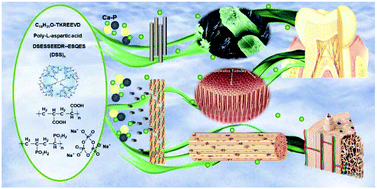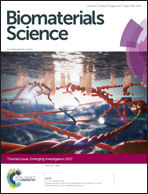From molecules to macrostructures: recent development of bioinspired hard tissue repair
Abstract
Enamel, dentin and bone are calcified hard tissues in the human body that play significant roles in food mastication and movement support. Generally, hard tissues lack the ability of self-repair, except for the regeneration ability of bone for small-scale defects. Fabrication of man-made repair materials is therefore highly demanded. In this review, following a bioinspired strategy, we describe the composition and multiscale structures of different hard tissues, and highlight the key points for the reconstruction of hard tissues. Finally, bioinspired tissue repair techniques ranging from molecule-induced mineralization, to microscale assembly to macroscaffold fabrication are summarised.

- This article is part of the themed collection: Emerging Investigators 2017


 Please wait while we load your content...
Please wait while we load your content...